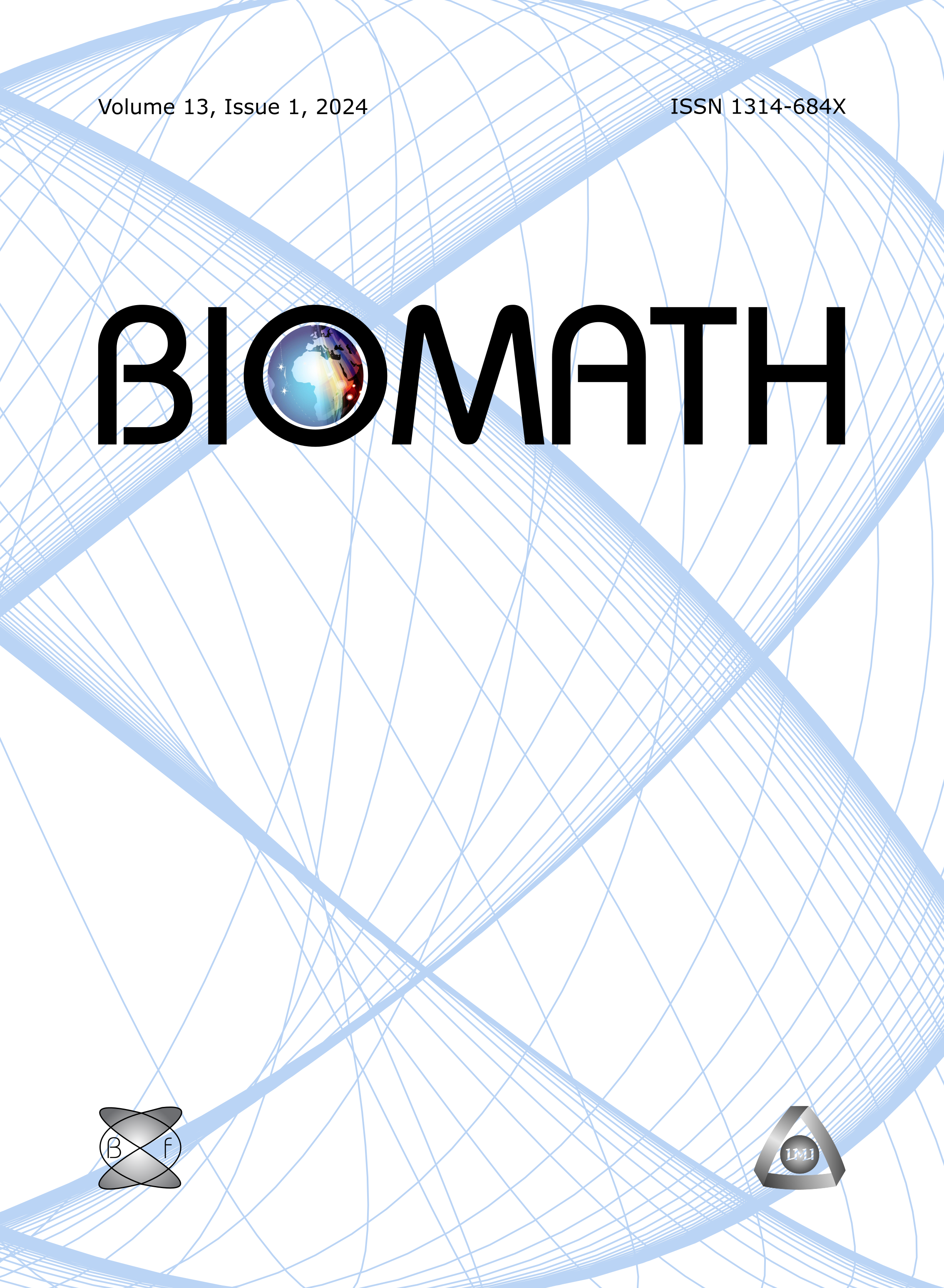Investigating the Role of Mobility between Rural Areas and Forests on the Spread of Zika
DOI:
https://doi.org/10.55630/j.biomath.2022.12.149Keywords:
Zika, Vertical Transmission, Basic Reproduction Number, Stability Analysis, Sensitivity Analysis, Bifurcation AnalysisAbstract
A mathematical model of Zika virus transmission, incorporating human movement between rural areas and nearby forests, is presented to investigate the role of human movement in the spread of Zika virus infections in human and mosquito populations. Proportions of both susceptible and infected humans living in rural areas are assumed to move to nearby forest areas. Direct, indirect, and vertical transmission routes are incorporated for all populations. A mathematical analysis of the proposed model is presented. The analysis starts with normalizing the proposed model. The positivity and boundedness of solutions to the normalized model are then addressed. The basic reproduction number is calculated using the next-generation matrix method and its relation to the three routes of disease transmission has been presented. The sensitivity analysis of the basic reproduction number to all model parameters is investigated. The analysis also includes the existence and stability of disease-free and endemic equilibrium points. Bifurcation analysis is also carried out. Finally, numerical solutions to the normalized model are obtained to confirm the theoretical results and demonstrate human movement's role in disease transmission in human and mosquito populations.
Downloads
Published
Issue
Section
License
Copyright (c) 2022 Kifah Al-Maqrashi, Fatma Al-Musalhi, Ibrahim M. ELmojtaba, Nasser Al-Salti

This work is licensed under a Creative Commons Attribution 4.0 International License.
The journal Biomath is an open access journal. All published articles are immeditely available online and the respective DOI link activated. All articles can be access for free and no reader registration of any sort is required. No fees are charged to authors for article submission or processing. Online publications are funded through volunteer work, donations and grants.
Authors who publish with this journal agree to the following terms:
- Authors retain copyright and grant the journal right of first publication with the work simultaneously licensed under a Creative Commons Attribution License 4.0 that allows others to share the work with an acknowledgement of the work's authorship and initial publication in this journal.
- Authors are able to enter into separate, additional contractual arrangements for the non-exclusive distribution of the journal's published version of the work (e.g., post it to an institutional repository or publish it in a book), with an acknowledgement of its initial publication in this journal.
- Authors are permitted and encouraged to post their work online (e.g., in institutional repositories or on their website) prior to and during the submission process, as it can lead to productive exchanges, as well as earlier and greater citation of published work (See The Effect of Open Access).

